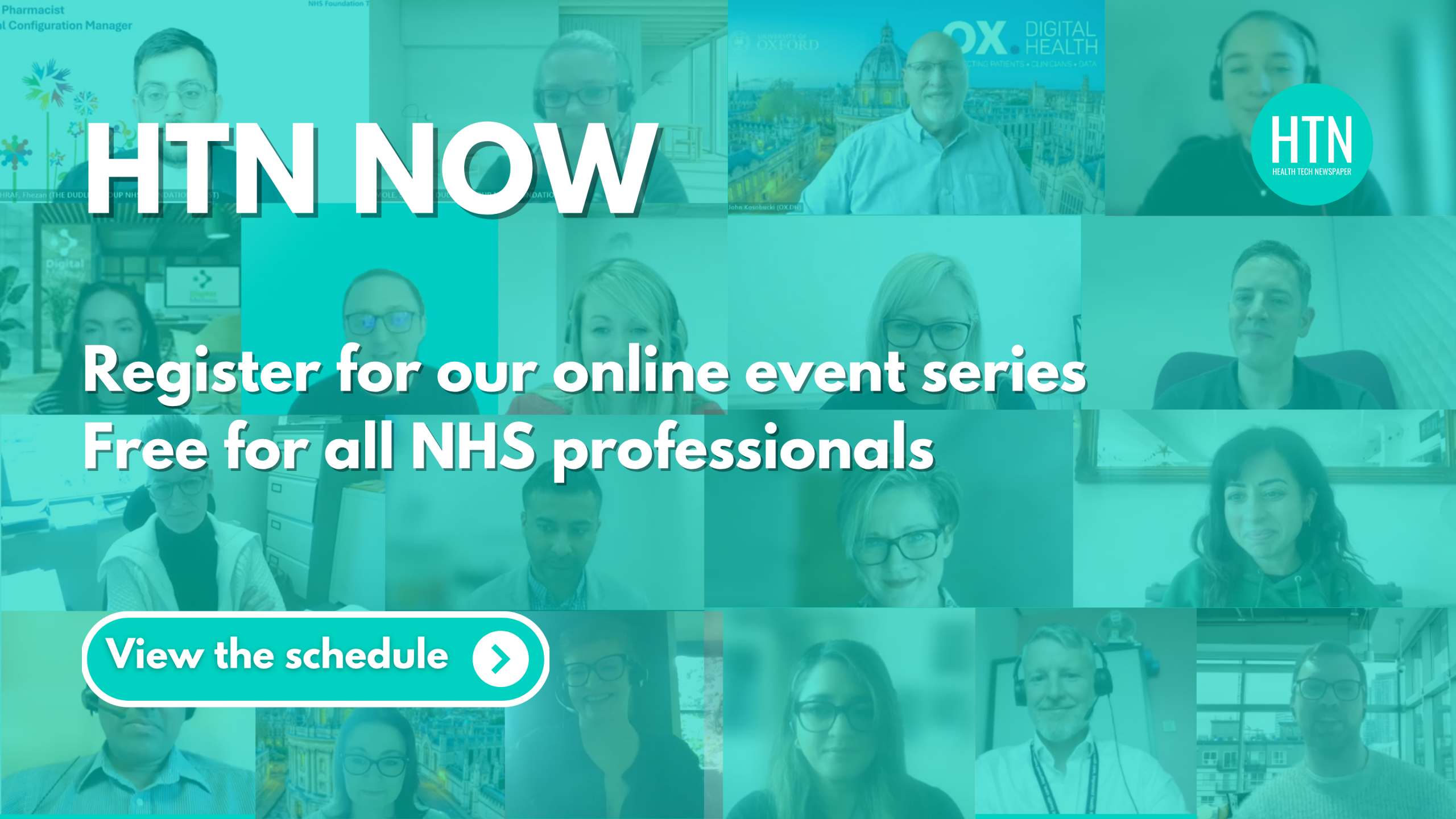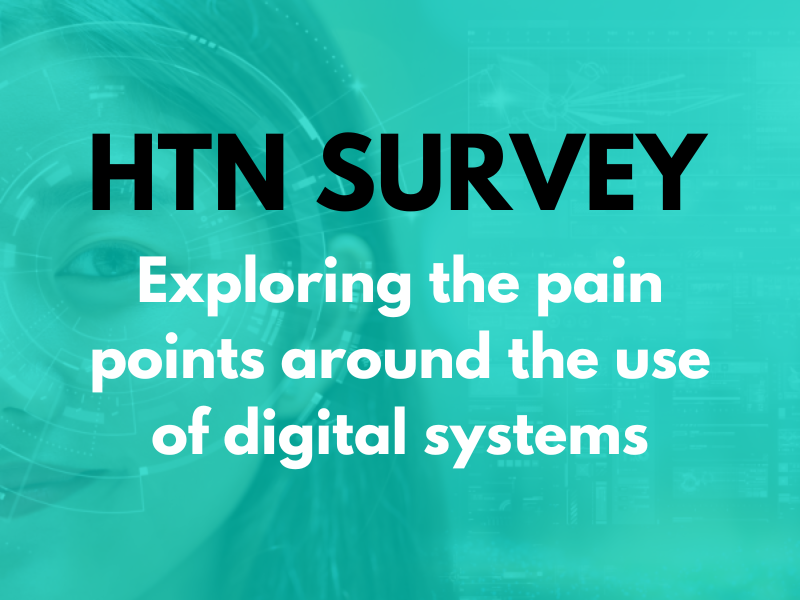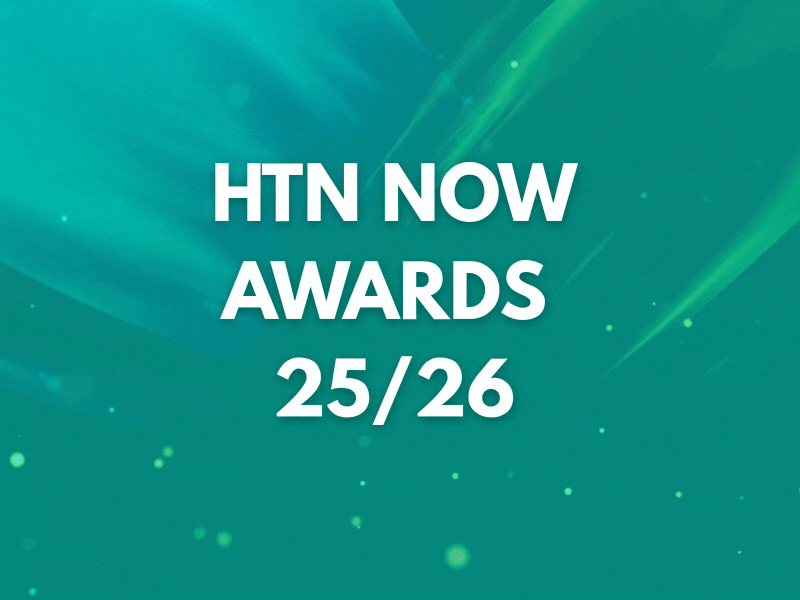For a recent HTN Now panel discussion, we were joined by expert panellists from across the healthcare sector to debate some of the key priorities and areas for the application of digital tools in women’s healthcare, as well as barriers to tech and the future outlook for digital in this arena.
Panellists included: Saima Sharif, NHS obstetrician & gynaecologist, North Middlesex University Hospital NHS Trust and digital/AI adopter for women’s health; Dr Nikita Kanani MBE, GP and chief strategy and innovation officer at Aneira Health; Sally Mole, senior digital programme manager – digital portfolio delivery team at The Dudley Group; and Vicky Rothwell, lead enterprise architect, Aire Logic.
We started by running through some introductions, with Saima sharing details about her background in obstetrics and gynaecology, as well as her work around AI in foetal medicine. “I’ve recently collaborated with digital midwives on some patient digitisation work,” she told us, “and created a working group within the trust on the digitisation of patient information within obstetrics and gynaecology, because you’d be surprised to learn that everything was still in paper format.”
Nikita, former director NHS England, introduced us to Aneira Health: “Our focus is on improved access and not leaving anyone behind,” she noted, “and we’re building a new care model designed specifically for women.” Talking about her work with NHS England in commissioning and on areas such as the vaccine programme, she said: “Wherever it is I’ve been, I’ve always seen the dramatic impact of gaps in research, care pathway design, investment, etc., and with Aneira Health I’ve had chance to explore all of this new and emerging tech, which has been a joy. If we’re going to change the status quo, we have to create that change, so we can really personalise care and do more research, particularly into diverse and underserved populations.”
On her work as an enterprise architect with Aire Logic, Vicky told us about partnering with NHS organisations to understand their strategic goals and ambitions, and looking at developing technology solutions to help achieve those. A focus at the moment is prevention, she continued, “so how people can have more control over their health, and what’s needed in order to help them do that”. Highlighting the gap in women’s health, Vicky said: “It’s important we look at how we can use technology and data to reorganise services to support women and start to remove some of these bottlenecks, reduce waiting times, and get people seen sooner.”
Sally told us about how her career with the NHS began in pharmacy, before “taking a side step into digital” around eight years ago. “At the moment, I’m heading up the PMO, and I’m responsible for the delivery of our portfolio, which covers 62 projects right now,” she said, “and we’re starting to look forward to the next three years, looking at our digital plan, strategy, and digital maturity. There are so many of our recent projects which touch upon women’s health – we’ve got a fully electronic maternity department, which has been a massive learning curve, because nobody fully understood the complexity of the processes at the beginning.”
The role of digital and data in redesigning and personalising services around women’s health
“If we go back to those dark days of COVID and the vaccination programme, what was really helpful was having a very simple digital platform we could use to find people,” Nikita shared, “and by looking at the data, we realised that mainly white men were taking up the vaccine, whereas other communities and women were not.” By triangulating that with local authority data, the team were able to “go pretty deep” into that, almost to street level in certain areas, she went on, “and our ability to do that had an important impact on equality, access, and trust. Being able to use those tools to learn about our communities and inform how we interact with them, is vital.” The best way to go about ensuring equality of access across any type of healthcare offer is to focus on remote interactions, Nikita said, “and our ability to provide that blended model in a way that builds trust and autonomy is really key”.
“Data is the key here,” Vicky agreed. “It’s about being able to learn from those experiences and interactions, and we have a large part of the female community that are too frightened or unable to have those interactions, whether that’s calling their GP, making an appointment, or going for those discussions about their periods, their fertility, and so on.” Part of that can often be due to cultural barriers or a lack of support from their community, she told us, “and if we can offer up a way for them to engage with these services, show them we’re going to take care of their information and data, and use that to inform the way we reach out to those underserved populations, that’s so important.”
Offering her perspective from North Middlesex, and a community where “a significant majority of women don’t speak English”, Saima talked about the importance of recognising the needs this creates, and utilising technology and data to find those women requiring additional support. “There are all these amazing innovative ideas and solutions,” she said, “but there’s a massive disconnect in the NHS, which means I’m not seeing them as a clinician on the ground. An example of that would be wearables. There are solutions out there which would allow us to pinpoint those women at higher risk of developing conditions like preeclampsia, but those solutions just haven’t been integrated.” A lot of that comes down to funding, Saima shared, “and that’s the issue we have in the NHS – there are all of these opportunities, and you can see the potential for those, but the funding just isn’t there”.
The joining up of data is integral, Sally considered, “and that’s another challenge we’ve got, because we’re deploying at least 20 solutions every year, but it’s making sure the data is joined up, otherwise we can’t give that personalised care to women, and we want to get to system-wide working, where women can choose where they want to go for their services”. Pointing to progress on this through things like the Shared Care Record, working at ICB-level to secure better deals, streamlining processes, and standardising data; she noted these aren’t areas for “quick wins”, and that ultimately “these things will take years and years”.
Overcoming challenges such as access in the women’s health space
“We’re having a lot more conversations about women’s health,” said Nikita, “but a lot of that is a little bit patronising, and a little bit paternalistic; that’s the market perception, and currently investment in UK women’s health is less than two percent, with women also making up only about two percent of founders.” A lot of information and guidance is “very male-centric”, she went on, and whilst women are regularly using things like wearables and apps to monitor their own health, “we’re not fully taking advantage of that to help us with personalisation”. Pushing back against the current paradigm and status quo is the only way to effect real change, she said, “and we need to start to do things differently”.
One of the challenges for women’s health specifically is the lack of visibility around women’s health issues, Vicky considered, “because a lot of that is happening internally, it’s mental health, it’s not as visible as maybe a lump or a bump”. Stigma is also an issue, she continued, especially for things like the menopause, “and we need to start breaking that down”. Going back to service design and making decisions around what a service is offering and what channels will be required for it to do that effectively, is a great first step in personalising care, she said, “and it’s not a one-size-fits-all; it can’t be like that, and if we really want to provide equality in healthcare for women, we need to look at what that service looks like”. Working around the barriers, bringing services closer by allowing women to submit things like blood samples via a pharmacy, and liberating those siloes of health data which “do not have women’s best interests at heart” will be essential to moving things forward in this sphere, she concluded.
There are a “plethora” of home testing kits out there, according to Nikita, “and we’ve used some of those with women who might not have time to attend a clinic, for things like smear testing. And those women are delighted that they can just do that at home and then pop it in the post – a lot of them don’t interact with healthcare because they don’t think they’re important, because the system has decided that they’re not.”
Picking up on this point, Saima talked about her work in perinatal mental health, saying: “It’s not just the people we don’t have access to; it’s those who choose not to access services as well.” Offering these kinds of interventions at home in secondary care would also be amazing, she said, “but that’s just not happening at the moment”. Getting things like wearables integrated into services would also be key, she went on, “for things like monitoring baby movements, and monitoring mother’s vitals”. Saima also noted the potential for AI to help bring waiting lists down and manage processes to help women be seen faster, saying: “There’s just so much on the shop floor that we’re not seeing at the moment, but I’m hoping these discussions will open up and create solutions.”
Improving diagnostics and data for women’s health conditions
Saima noted that from her perspective in obstetrics and gynaecology, “women are being diagnosed late for cancers, because those processes and procedures before they reach us haven’t been optimised yet”. Women are also often frustrated by the fact they’re having to repeat their story or symptoms again and again to different clinicians, she told us, “and that’s because there’s still such a disconnect, and information isn’t being shared”.
Sally talked about a project currently underway in Dudley around clinical decision support for radiology orders in primary and secondary care. “It will tell you, based on the input into the system, whether or not patients need a CT scan or recommend an alternative diagnostic,” she said, “and then we have AI diagnostic solutions which speed things up and prioritise patients.” Looking more closely at flow, as well as at the “intuitiveness of the system” is something that’s needed, she continued, “and if we can streamline the process, capture and share data, women are going to get a better clinical experience”.
There are key things that the trust now asks as part of the procurement process to try and help get that joining up in place, Sally continued, “like do you integrate into the NHS app or the EPR; can we flow that data into the Shared Care Record; and can you integrate with the NHS Spine; because these are all the pinch points we need in order to integrate that data. There are a lot of better ways to do things, which we’re trying to build into our practice.” Talking about working groups for AI, she said: “We’re trying to really do the research and understand where AI fits into some of these processes, as well as what the safety mechanisms are we can put in if we do implement them.”
Vicky shared her perspective as a supplier, saying: “We understand what’s needed in terms of sharing and interoperability; the fundamental problem, however, is legislation.” A shift in mindset is required, she went on, which would allow those who are happy for their data to be shared to consent to that, so their data can be shared across the care pathway. “I know people can be sensitive about their data being shared, but I don’t think they’re always clear on what it’s being used for, or why,” she said, “and that needs to be addressed, so people are informed about how the sharing of their data would benefit their care.”
“Ownership of data is really key,” Nikita agreed, “and it’s a mindset piece, as well as a legislation piece”. When those conversations are had with women about how their data can be used to improve care, in general most are more than happy for that to happen, she told us, “because what we’re saying is let us use that to tailor care for you, but also let us use that for research which can help women around the world”. Nikita also highlighted the need for data disaggregation, and understanding any AI bias existing within datasets, adding: “Health inequalities get worse, because we lack data on social and digital exclusion. Two key points are: not everyone has to have a device for us to offer digital access, because we can use community access points; and promoting hybrid models, which are digital-first, but not digital-only. Things like telemedicine are available now, but they just haven’t yet been baked into our system.”
Focusing on short term actions to improve women’s health services
“In the short term, I think the focus has to be on data liberation across our health services as they stand,” said Vicky. “Enabling the flow and sharing of information has got to be an enabler to getting healthcare expedited. Yes, there are lots of things that need to be improved, but let’s try and improve what’s already a bit clunky, and then look at the service design of what we’re actually delivering to these women.”
Sally talked about Dudley’s maternity EPR, sharing that there are “a multitude of improvements already lined up” for that, and that the trust has a maternity governance board “to try and drive the change through the organisation”. Making innovations clinically led has been central to Dudley’s approach, she told us, “and we’re putting clinicians at the forefront of digital innovations, because they know better than anyone else what the challenges and barriers are”. Taking people on the journey with you is key, she said, “and that helps the clinical team own the service and really reinforce those benefits”.
“I 100 percent agree with Sally’s point about clinically-led solutions,” Saima said, “and I am optimistic – people are listening, conversations are happening, and change is actually happening.” The gap needs to narrow, however, between the solutions that are out there, and those that are in use within the health service, she went on, “because at the end of the day, the people who we’re talking about, who need our services the most, like that vulnerable woman at home who has no access – it is through the NHS we’re going to be able to make that change for them. We need those companies with solutions to come into the NHS, and I’d be grateful if those at the top could take steps to get these solutions integrated onto the shop floor.”
“We’re stuck in analogue when we think about women’s health,” Nikita observed, “so we need to fix the data gap; focus on digital-first, but not digital-only; fast-track AI diagnostics and use AI to help us spot patterns earlier; and look at what we can do to resolve digital exclusion within our own patch.” Funding for women’s health tech is essential, she continued, “and partnership is key – it can’t be done just within the NHS; it has to be done across the whole system.”
We’d like to thank our panellists for joining us, and for sharing their insight on this topic.






